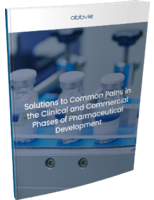NTSB makes safety recommendations for FAA.
Share:
Press Release Summary:
According to NTSB, FAA should emphasize to principal operations inspectors importance of conducting timely post-accident drug and alcohol testing. FAA should address need for initial training on rationale for and criticality of conducting landing distance assessments before landing on contaminated runways. NTSB also recommends that FAA issue CertAlert to all 14 Code of Federal Regulations Part 139 certificated airports that describes circumstances of accident.
Original Press Release:
NTSB Safety Recommendations A-08-40 through -43
The National Transportation Safety Board recommends that the Federal Aviation Administration:
Emphasize with principal operations inspectors the importance of conducting timely postaccident drug and alcohol testing. (A-08-40)
As part of the Takeoff/Landing Performance Assessment Aviation Rulemaking Committee, address the need for initial training on the rationale for and criticality of conducting landing distance assessments before landing on contaminated runways. (A-08-41)
Issue a CertAlert to all 14 Code of Federal Regulations Part 139 certificated airports that describes the circumstances of this accident, emphasizes the importance of specific and decisive radio communications, and urges airports to ensure that those criteria are being met in all airfield radio communications. (A-08-42)
Require all 14 Code of Federal Regulations Part 139 certificated airport operators to include in their airport's snow and ice control plan absolute criteria for type and depth of contamination and runway friction assessments that, when met, would trigger immediate closure of the affected runway to air carrier operations. Friction assessments should be based on pilot braking action reports, values obtained from ground friction measuring equipment, or estimates provided by airport ground personnel. (A-08-43)
The following previously issued recommendations to the Federal Aviation Administration are reiterated:
Evaluate crash detection and location technologies, select the most promising candidate(s) for ensuring that emergency responders could expeditiously arrive at an accident scene, and implement a requirement to install and use the equipment. (A-01-66)
Immediately require all 14 Code of Federal Regulations Part 121, 135, and 91 subpart K operators to conduct arrival landing distance assessments before every landing based on existing performance data, actual conditions, and incorporating a minimum safety margin of 15 percent. (A-07-57) (Urgent)
Modify and simplify the flight crew hours-of-service regulations to take into consideration factors such as length of duty day, starting time, workload, and other factors shown by recent research, scientific evidence, and current industry experience to affect crew alertness. (A-06-10)
http://ntsb.gov/recs/letters/2008/A08_40_43.pdf
The complete recommendation letter is available on the Web at the URL indicated above.




